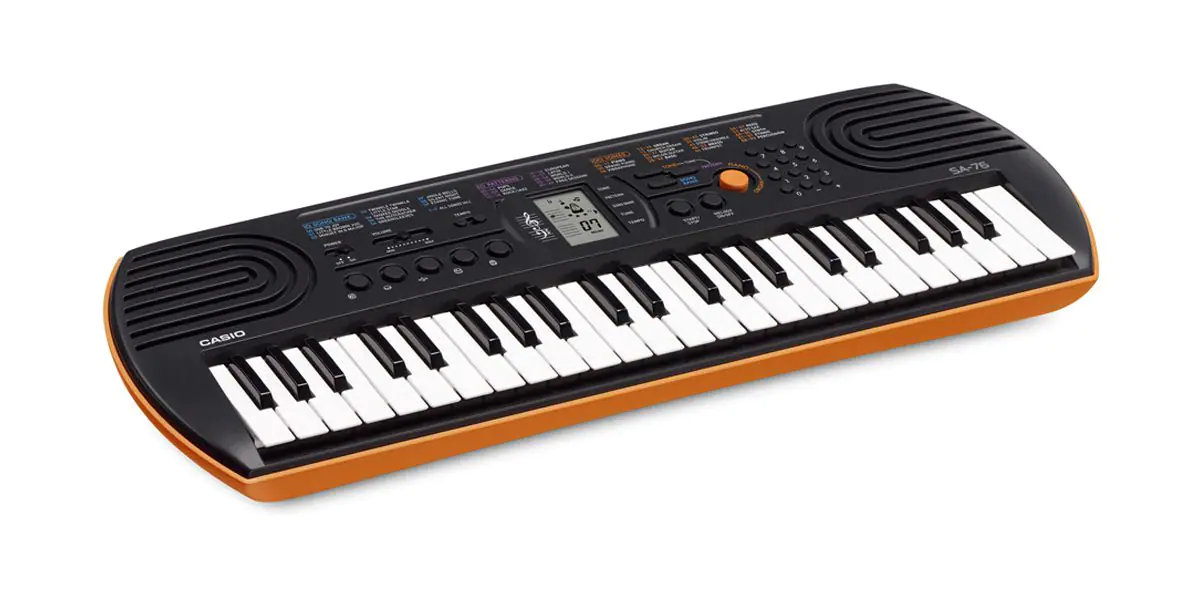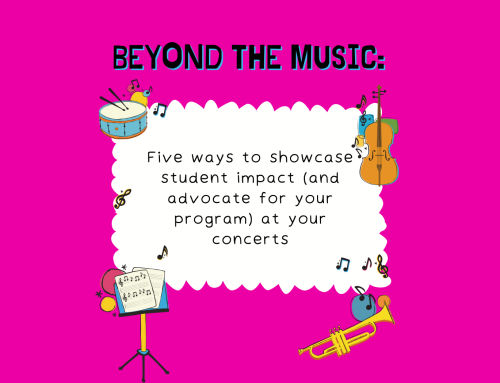I spent the first four years of my teaching career with zero instruments for my high school general music class. We had nothing, and I was told there was no budget for my class. I tried to make the best of it by gathering all of the “leftovers” throughout our district. I secured an old drum set from the middle school jazz band (it still sits in my room today, over ten years later), some broken xylophones from the elementary school, and any bass or electric guitar I could snag from craigslist.
Little by little, I began to build my collection of misfit instruments. My goal was always to have kids involved in active music-making. The struggle was that my “general music” class had so many students (40 per section) that it was hard to get enough instruments and physical spaces for students to play together.
About five years ago, I invested in a few Casio keyboards for my classroom. I figured it was an easy way to get kids on keyboards without spending all of our allotted budget on one full-sized keyboard each year. In my mind, students would use these keyboards for our “making the band” project and then put them away, only to use them if they were ever doing another keyboard project.
Little did I know that these small keyboards would be a game changer for all of my classes. In this blog post, I outline how portable keyboards have helped me teach rhythm, ensemble, and musicianship skills.

In the Orchestra Classroom
As a kid, we never did any keyboarding in ensemble classes. Our focus was always on the instrument we held in our hands. But, in my orchestra classroom, these Casio keyboards have helped my students develop so many incredible skills. Some of the ways we use them include:
- Arranging: Each year, we do an arranging project where students pick a popular song, learn it by ear, and transcribe it into notation software. In each group, one student will use the portable keyboard to figure out parts that can then be transcribed online. Visually seeing the keys seems to be more helpful than when they try to arrange using their orchestra string instruments.
- Theoretical Knowledge: When teaching the circle of 5th, or chord theory, I always have my students grab the portable keyboards. It helps them to visualize the distance between notes and how their music is arranged in space.
- Keyboarding Skills: As a pianist, I always imagine the keyboard layout when working on theory assignments. And I’ve found that my students with a piano background tend to grasp theoretical concepts more quickly and tend to be more advanced in musicianship skills. Now, I work to ensure every student in my orchestra has basic keyboarding skills and can accompany others using simple chord progressions.
In the General Music Classroom
In my general music class, the options for these keyboards are endless! I love that they have a good amount of sound sets and percussion options. Despite some problematic labels (Casio, can someone please get rid of the “ethnic tune” label for the final song sample?), there are options for exploring tempo, lead, and rhythm parts all in one instrument. Some of the applications we’ve explored include the following:
- Ensemble: Some of my GM students have never played in a musical group before. We use the keyboards to learn cover songs, and students break up into parts (drums/percussion, bass, and keys) to play together.
- Songwriting: After teaching students some basic chord theory, we explore songwriting on the keyboards. Then, students pick a percussion backing track and perform their songs.
- Extension Activities: There are so many YouTube tutorials on the keyboard. If a student finishes one of their projects early, I encourage them to grab a keyboard, pop in a pair of headphones, and learn a song.
Guitar Class Applications
Keyboards? In guitar?
Like my orchestra classroom, I regularly utilize the portal keyboards in our beginning guitar class. Not only does it give students a chance to ensemble together (as mentioned above), but it also provides opportunities to develop their musicianship skills.
One of the best parts of these keyboards is that they’re battery-operated (or could be plugged in), so students can easily take them to other breakout practice spaces. My students regularly sit on the floor in a circle, using their guitars and Casio keyboards to work out instrumental parts. It’s so easy to grab them and go! I’ve seen fellow teachers use these in similar scenarios and even build cubbies that fit the keyboards inside.
Closing
Finding portable tools for teaching and learning is crucial for any music teacher. I’ve yet to find a solution that works as well as the Casio SA-76 in terms of affordability and functionality. You can learn more about the keyboard specs at this link.
What about you? Have you used portable keyboards or something similar in your music classes? Which brand is your favorite?




Leave A Comment